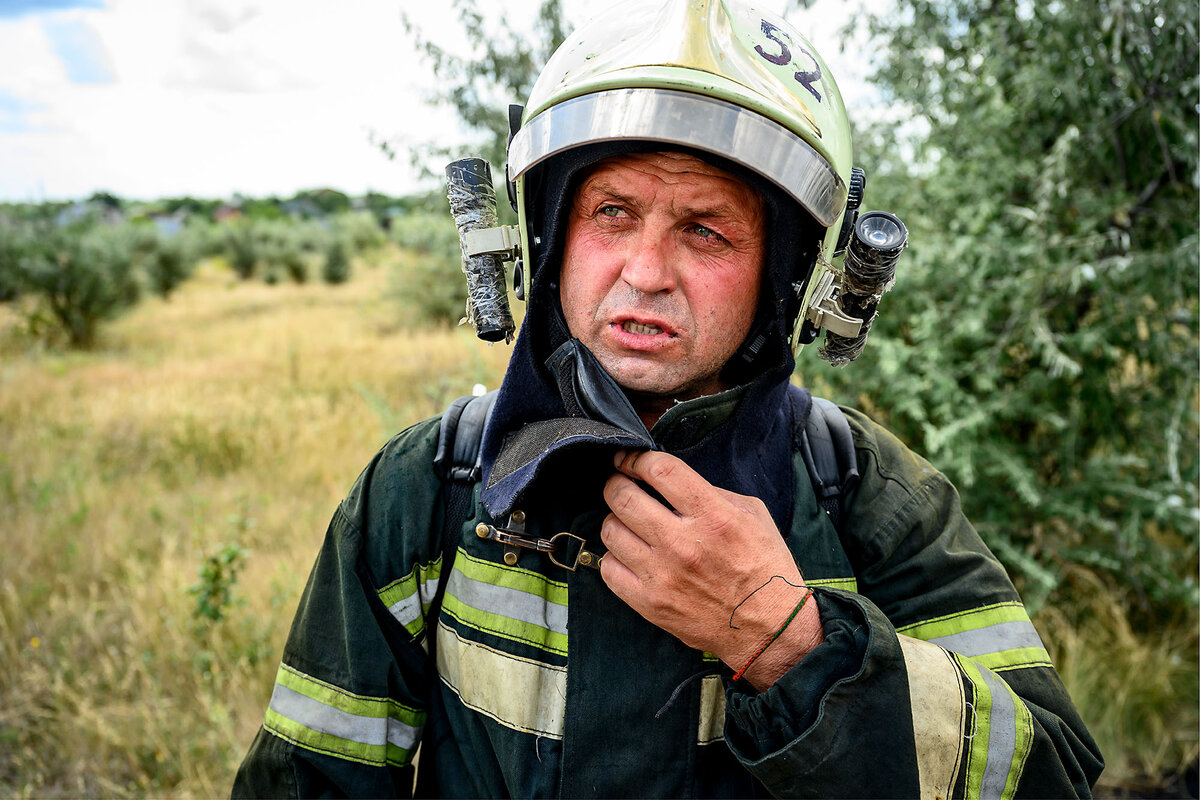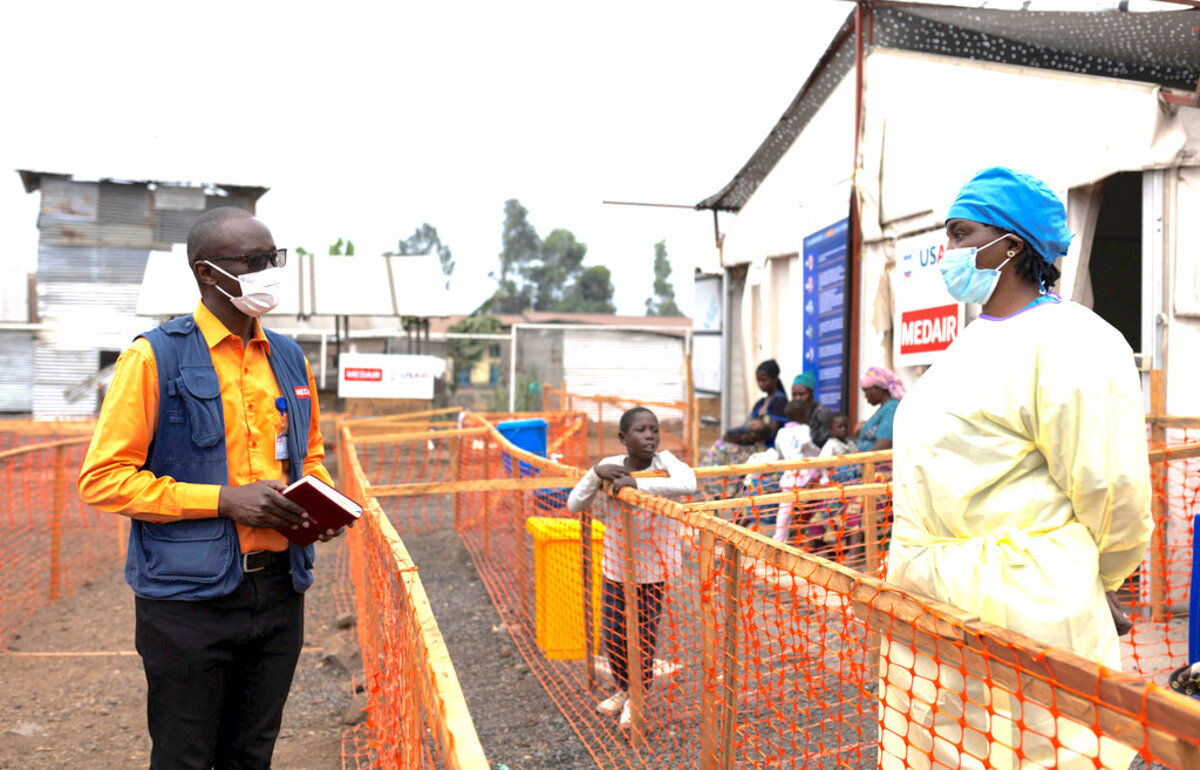With momentum on Vice President Kamala Harris’ side – and time running short – Republicans are advising former President Donald Trump to focus more on policy, less on personal attacks.

Why is Christian Science in our name?
Our name is about honesty. The Monitor is owned by The Christian Science Church, and we’ve always been transparent about that.
The Church publishes the Monitor because it sees good journalism as vital to progress in the world. Since 1908, we’ve aimed “to injure no man, but to bless all mankind,” as our founder, Mary Baker Eddy, put it.
Here, you’ll find award-winning journalism not driven by commercial influences – a news organization that takes seriously its mission to uplift the world by seeking solutions and finding reasons for credible hope.
Explore values journalism About usMonitor Daily Podcast
- Follow us:
- Apple Podcasts
- Spotify
- RSS Feed
- Download
Scott Peterson first crossed into Ukraine to cover its current war for the Monitor just weeks after fighting began in February 2022. He spoke with me about his war reporting from Odesa very soon after, and then joined our “Why We Wrote This” podcast in June 2023 with an update.
What Scott spoke presciently about, both times: a Ukrainian strain of resilience that could, and ultimately would, make Ukraine a formidable foe for its Russian invaders. (See yesterday’s Daily.)
The battle has seesawed. But on the latest of Scott’s trips back, he found still more evidence of resourcefulness and grit. Scott reports today on a firefighter whose chosen work also extends to getting civilians clear of shelling. Ivan Subotin’s brand is hope.
Already a subscriber? Log in
Help fund Monitor journalism for $11/ month
Monitor journalism changes lives because we open that too-small box that most people think they live in. We believe news can and should expand a sense of identity and possibility beyond narrow conventional expectations.
Our work isn't possible without your support.
Today’s stories
And why we wrote them
( 6 min. read )
Today’s news briefs
• Elections in Kashmir: India announces three-phased assembly elections in disputed Jammu and Kashmir, the first since Prime Minister Narendra Modi’s government stripped the Muslim-majority region of its semiautonomous status and made it a federally controlled territory in 2019.
• New Thai leader: Parliament elects Paetongtarn Shinawatra as the country’s new prime minister after removal of her immediate predecessor over an ethics violation. Ms. Paetongtarn will become Thailand’s third leader from the Shinawatra family after a required royal endorsement.
• Indian trainee doctor’s killing sparks outrage: Thousands of people, including doctors and paramedics, march through Indian cities to protest the rape and killing of a trainee doctor at a government hospital last week.
• Reputed gang leader arrested in U.S.: Suspected in nearly two dozen killings in his home country of Peru, Gianfranco Torres-Navarro is arrested in Endicott, New York, by U.S. immigration authorities, according to U.S. Immigration and Customs Enforcement.
A letter from Gaza
( 5 min. read )
Ghada Abdulfattah, the Monitor’s Gaza correspondent, keeps her cool when she reports. But sometimes she feels like screaming. In this wrenching personal letter to readers, she voices her fear and fury at the climate of death that poisons life in Gaza. Ordered to relocate yet again, she cries from the heart: “Why must we endure such hardship? ... Who will stop this war?”
The Explainer
( 5 min. read )
With inflation high on voters’ priority list, Kamala Harris is proposing steps to keep food prices in check. What’s behind grocery prices, how high is inflation, and can a ban on price gouging help?
( 5 min. read )
The number of baby boomers hitting age 65 peaks this year, creating an exploding market for “age tech” innovation that serves their digital needs.
( 4 min. read )
How do you capture both the atrocities of slavery – and the dignity of the people who survived it? Our columnist visited the offerings at the new Freedom Monument Sculpture Park in Montgomery, Alabama. He calls it “an overwhelming experience.”
Difference-maker
( 4 min. read )
To save people and property, firefighters the world over take risks, earning recognition as heroes. In eastern Ukraine’s war zone, firefighter Ivan Subotin, founder of a rescue organization, is motivated, he says, to restore people’s faith in the future.
The Monitor's View
( 2 min. read )
Since the reopening of societies following the recent pandemic, concerns have lingered that the world is unprepared for a similar health crisis. Yet lessons from COVID-19 are now shaping the response to the latest global alert. On Wednesday, the World Health Organization declared a global emergency based on its analysis of a new strain of mpox in Africa.
The WHO has called for assistance to those afflicted countries that may lack the means to contain the outbreak. The world needs “a tailored and comprehensive response, with communities at the centre, as always,” said WHO Director-General Tedros Adhanom Ghebreyesus.
His words indicate the need for more than medical supplies and personnel. As health workers know well, dealing with the public fear of a disease requires calmness, honesty, and empathy. The risks of mpox should not be overestimated or underestimated, said Magnus Gisslén, Sweden’s state epidemiologist, after his country recorded one of the first cases of the strain to emerge beyond Africa. Along with other European officials, he rejected calls for a travel ban to avoid stigmatizing other countries or their traveling citizens.
In Africa, officials have so far displayed a greater degree of transparency. During past health crises, such as the one surrounding HIV, governments were often reluctant to publicly admit a problem that would require a change in social traditions. Now, more officials are concerned with helping communities work through social stigmas that might create resistance toward professional care. Officials in Kenya, Uganda, and Rwanda, for example, say they are working together to coordinate caring responses to workers who regularly cross their borders. The outbreak has also renewed attention on the humanitarian crises in Congo, where more than 500,000 people languish in refugee camps from war.
In a “toolkit” for dealing with mpox, a WHO report urged the need for empathy to be at the center. That means “establishing and maintaining trust with affected communities, addressing the emotional needs of those affected, ... [and] reducing stigma and fear,” it noted. In any pandemic, loving care can be a powerful antidote – and serve as a first responder.
A Christian Science Perspective
Each weekday, the Monitor includes one clearly labeled religious article offering spiritual insight on contemporary issues, including the news. The publication – in its various forms – is produced for anyone who cares about the progress of the human endeavor around the world and seeks news reported with compassion, intelligence, and an essentially constructive lens. For many, that caring has religious roots. For many, it does not. The Monitor has always embraced both audiences. The Monitor is owned by a church – The First Church of Christ, Scientist, in Boston – whose founder was concerned with both the state of the world and the quality of available news.
( 4 min. read )
As we learn that God’s goodness is practical, we gain the confidence to claim it in any aspect of life.
Viewfinder

A look ahead
We’ve got a bonus offering for you today: The Monitor recently ran a three-part series examining three different experiments in drug decriminalization. The through line: compassion. You can hear the writers voice all three stories in this week’s episode of our “Why We Wrote This” podcast.
Thanks for ending your week with us. Come back Monday. We’ll have a story on the ethics of artificial intelligence-enabled drones in war, and begin coverage of the Democratic National Convention.










